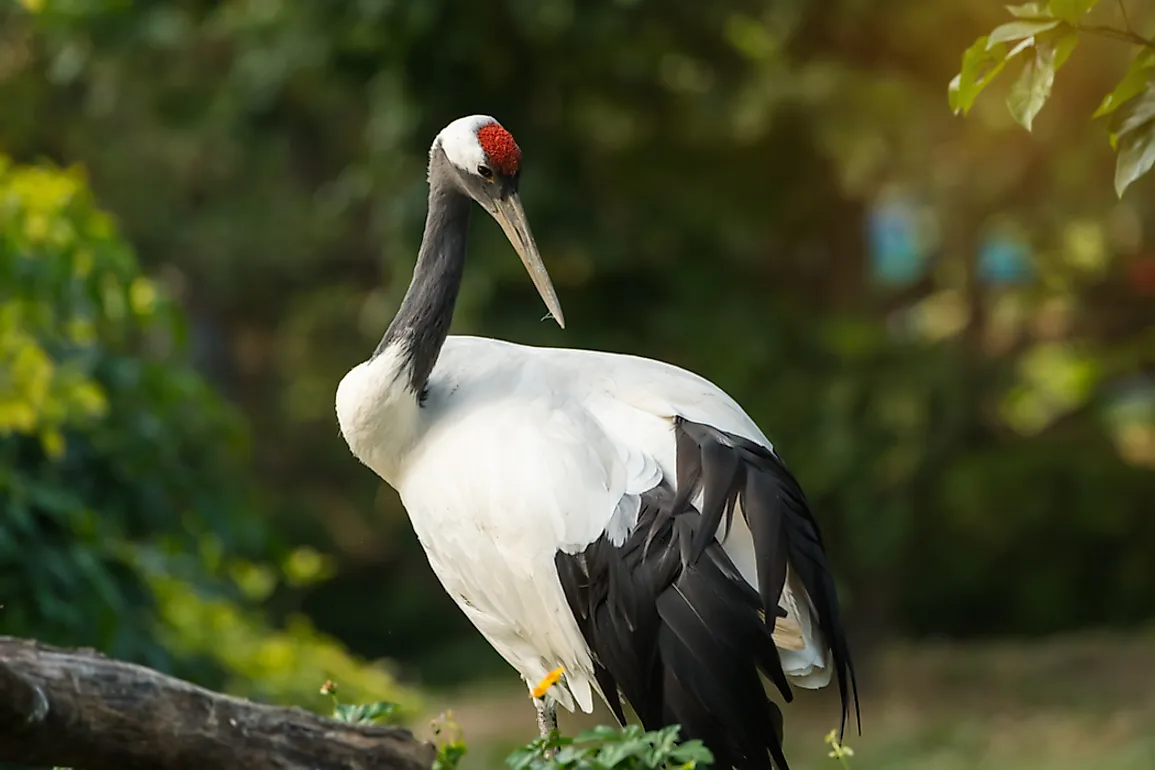Why Are Japanese Cranes Dying?

The red-crowned crane or the Japanese crane is a beautiful and elegant-looking bird. Its scientific name is Grus japonensis. It is named for the red patch on their crown. It is one of the rarest cranes living today. In parts of its range, the bird is revered as a symbol of longevity and good fortune.
Range, Habitat, and Diet
The Japanese crane has both resident and migratory populations. The resident population lives in Hokkaidō, Japan. Migratory populations breed and nest in Siberia, northeastern China, and northeastern Mongolia. During the winter, they migrate to the Korean Peninsula and east-central China. The diet of these omnivorous birds varies with their habitat in the different seasons. During summer and spring, they live near wetlands or by the rivers where they feed primarily on aquatic invertebrates, fish, amphibians, and even waterfowl. In their wintering range, they can be spotted in agricultural fields, mudflats, etc., where they survive on a variety of water plants, rice, carrots, acorns, etc.
Threats to the Japanese Crane
Sadly, the Japanese cranes are dying. The species has been enlisted as “Endangered” on the IUCN Red List. It is estimated that only about 2,750 members of the species survive in the wild. Here are the threats to this species:
1. Loss and Degradation of Habitat
The wetlands that are vital to the survival of the Japanese crane are under threat in both the breeding and the wintering grounds of the bird. Vast tracts of wetlands have been converted to agricultural lands or utilized for the purpose of aquaculture. Wetlands are also drained for construction of buildings, factories, etc.
Wetlands are also degraded due to the construction of dams. Since a large volume of a river’s water is diverted by a dam, wetlands located downstream suffer from a shortage of water supply. The proliferation of dams in China has dried up large sections of wetlands which serve as the habitat of the Japanese cranes. When water levels go down in wetlands, the area becomes accessible to the predators of these birds. Nesting sites become vulnerable to predator attacks.
Human disturbance in such wetlands also increases and that adversely affects the nesting of the Japanese who now feel stressed and threatened due to the presence of humans in their habitat.
2. Pollution
Important sites in the range of the Japanese crane are located on or near oil fields. Some examples of such sites include the Yellow River delta and the Song-nen plain. Oil spills at these sites threaten the well-being of the birds.
With air, water, and soil pollution increasing in the range of the Japanese crane, the birds are also being subjected to poisoning. In some continental wintering areas of the bird, adult mortality has been recorded with poisoning detected as the cause of death. Heavy metals have been found to be the culprit in most of the cases of poisoning.
3. Poaching and Capture
Poaching has been also regarded as one of the threats to the species. Reports exist about the capture of the cranes and their eggs for the exotic pet trade.
4. Change in Agricultural Practices
Since the birds often depend on waste grain for their diet in their wintering grounds, changes in agricultural practices also harm them. For example, the shift to autumn plowing in the Demilitarised Zone of the Korean Peninsula has reduced the access of the birds to waste grain.
5. Disease
The small resident population of the Japanese crane in Japan has a low genetic diversity. These birds gather in flocks at artificial feeding stations in Hokkaidō. Here, there is a risk of disease due to the concentration of birds in one place. A disease can wipe out the entire resident population within a matter of days.











